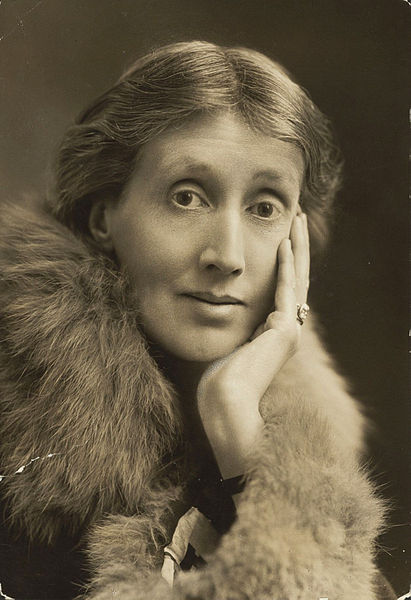 Virginia Woolf, 1927, author unknown. Photo source: Wikimedia Commons. Virginia Woolf, 1927, author unknown. Photo source: Wikimedia Commons. Virginia Woolf became one of the most well known writers of the 20th century. Woolf wrote on a diverse number of subjects, including politics, feminism, history and artistic theory; however, she’s best known for her experimental approach, often utilizing nonlinear story-telling methods, to explore these subjects, and the insights she revealed in using this approach. Her work greatly impacted the course of the Modernist period in literature. Woolf’s Early Years In 1882, Woolf was born into a family of intellect. Sir Leslie Stephen, her father, was an author and historian; he was the first editor of the Dictionary of National Biography. Julia Stephen, Woolf’s mother, was both a model and a nurse -- a profession she later wrote a book about -- with a vast network of artistic and social connections. Along with seven siblings (three full, and four half-siblings), Woolf grew up in a house on Hyde Park Gate in the wealthy London neighborhood of Kensington. However, she spent her summers in a drastically different environment on the Cornwall coast in the beach town of St. Ives. Despite starting out as a cheerful young girl and even starting a newspaper about her family's funny experiences called Hyde Park Gate News, Woolf faced several traumatic events. At six years old, Woolf was sexually abused by her two half-brothers George and Gerald Duckworth. Seven years later in 1895, Woolf lost her mother at age 13. At this point, Woolf stopped writing and fell into depression, a disease she would struggle with for the rest of her life. Before she could make a full recovery, her half sister died in 1897. Though depressed, Woolf studied at the Ladies’ Department of King’s College in London. She took courses in Greek, Latin and German and was introduced to a variety of different people championing feminism and educational reform. This progress halted in 1904 when Woolf’s father died. News of her father’s death devastated Woolf to the point that she was institutionalized for a period following his passing. From Depression to Expression Woolf continued to battle depression and juggled between expressing its depth through her literary work and falling into personal despair. In 1910, Woolf was in her early twenties when she met members of the Bloomsbury Group; she participated in this group of intellectual’s hoax to pose as Ethiopian royals and convince the British Royal Navy to show them the HMS Dreadnought, a navy warship. Soon after the successful prank, Woolf and Leonard, one of the group’s writers, began dating, and in 1912, the couple married. In 1915, nine years after she began writing it, Woolf published her first novel The Voyage Out. In the book, she used unusual methods and experimented by making use of free association prose and dream states. Woolf continued writing and pushing the bubble through experimentation, and in 1925 she released Mrs. Dalloway. This was Woolf’s fourth novel and it received high praise. The Encyclopedia Britannica describes Woolf’s approach to the novel “as patterned as a Post-Impressionist painting but is also so accurately representational that the reader can trace [the characters] movements through the streets of London on a single day in June 1923.” Woolf makes use of knitting together the characters internal monologues in order to raise issues such as mental illnesses and feminism. Two years later, Woolf published To The Lighthouse, where she drew upon memories from her childhood summers on the coast to create many of the story’s scenes. Into her forties, Woolf continued to publish not just novels, but also letters and essays as well as speak at universities and colleges. Woolf’s original thinking and unique writing style earned her respect from her peers. Death on the Verge of War Despite her literary successes, Woolf continued to combat depression. Following Woolf and Leonard’s London home being destroyed in the London blitz and Woolf’s fear that Leonard, who was Jewish, would be captured by the Nazis, Woolf put stones into her coat pockets, walked into the River Ouse and committed suicide in 1941. Her final work, Between the Acts, was published posthumously. Lasting Impact “I would venture to guess that Anon, who wrote so many poems without signing them, was often a woman.” -- Virginia Woolf. Woolf’s contributions to literature and society did not end with her death. Her writing influenced feminist movements that occurred decades later in the 1970s, not to mention the generations of writers that came after her. Woolf’s literary contributions helped pave the road for women thinkers to step out from the label “anonymous” and onto the intellectual stage for recognition. By Lisa Zimmermann
0 Comments
Your comment will be posted after it is approved.
Leave a Reply. |
Archives
July 2017
Categories
All
|
 RSS Feed
RSS Feed